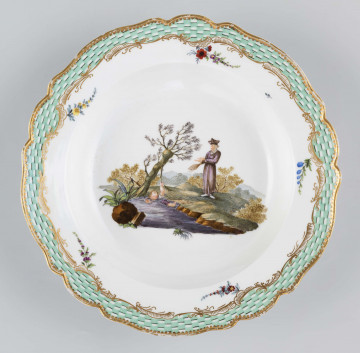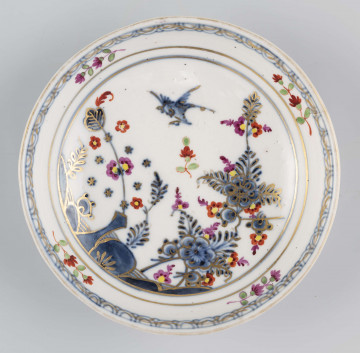
Creamer jug
1825 — 1835
National Museum in Lublin
Part of the collection: European porcelain
In 1751, the industrialist Kasper Wegely founded a porcelain factory in Berlin, which was taken over by King Frederick II of Prussia in 1763. From then on it operated under the name the Royal Porcelain Manufactory (KPM), and its development was all the more successful as it enjoyed exclusive rights to produce porcelain in Prussia until 1810. In a short time it gained popularity thanks to the high quality of porcelain mass and beautiful colours of painted patterns. Flowers were the dominating ornamental motif, which were used in all of the factories, but in Berlin they were particularly beautiful. The painters were inspired by Johann Wilhelm Weinmann's fundamental work on botany, Phytanthosis iconographia, published in print between 1737 and 1745, which contains hand-coloured engravings of several thousand plants. Designers were constantly working on new designs, also drawing ideas from observations of their surroundings - gardens and fields. At the end of the 18th and the beginning of the 19th century, English-style landscape gardens became fashionable. This was a manifestation of a new trend in culture - Romanticism. A romantic garden usually flowed smoothly into a meadow or forest. In most of them one could find vegetable beds and herb gardens, referring in style to medieval monastery herbaria.
It was at this time that a decoration appeared on porcelain with the French name fleurs en terrace (flowers on the terrace), in which garden flowers grow in clusters among the grass. On the platter it was combined with a gilded rim decorated with volutes and mascarons, which stylistically still belong to Classicism. Dishes of this type were made to individual orders, therefore they are rare both in museum collections and on the antiquarian market.
Barbara Czajkowska
Author / creator
Dimensions
cały obiekt: height: 26 cm, width: 35 cm
Object type
dish
Technique
overglaze paints
Material
porcelain
Creation time / dating
Creation / finding place
Owner
The National Museum in Lublin
Identification number
Location / status

1825 — 1835
National Museum in Lublin

1774 — 1814
National Museum in Lublin

1890 — 1800
National Museum in Lublin
DISCOVER this TOPIC
National Museum in Szczecin
DISCOVER this PATH
Educational path